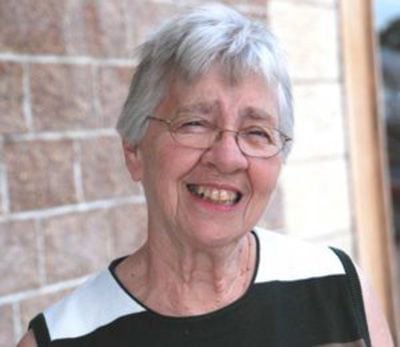Politics
Waterbury Family Honors Civil War Legacy with Ceremony in Polo

The Waterbury family gathered in Polo, Illinois, to commemorate their ancestor’s sacrifice during the Civil War. This ceremony, held on a Friday morning, included a tribute to William Waterbury, who perished while serving in the conflict. Family members also placed a commemorative stone at Fairmount Cemetery, marking his legacy alongside that of his wife, Lydia Waterbury.
Prior to the ceremony, a handmade doll named Emaline, representing a family member from the late 1800s, was presented to the family. The doll, dressed in a vintage baby dress created by the grandmother of one of the attendees, symbolized the rich history of the Waterbury lineage. The doll’s name, Emaline Waterbury, serves as a reminder of the family’s deep roots, with their ancestor arriving in America in 1621.
A Journey Through History
The Waterbury family’s story begins in Stamford, Connecticut, where the first settlers established themselves by the sea. Over generations, the family cultivated fruit trees and operated a woolen mill, which became a significant part of their community. With strong convictions against slavery, John and Ezra Waterbury were actively involved in the Underground Railroad. In 1836, John moved to Buffalo Grove, Illinois, to further support anti-slavery efforts, eventually settling in Eagle Point.
Ezra remained behind to care for their elderly parents but relocated to Illinois in 1848. Together, the brothers had a total of 11 children, ensuring that their legacy would continue through the generations. The family’s interconnectedness is marked by the naming of children after those who had passed, a tradition that reflects their values and traditions.
Honoring Sacrifice and Memory
William Waterbury, a descendant of Ezra, served alongside Zenas Aplington during the Civil War. Tragically, Aplington was killed in battle at Corinth, while William was captured and later died in Libby Prison due to disease and starvation. His remains were never recovered, leading to the creation of a cenotaph, a memorial for someone whose body is located elsewhere or has been lost.
During the ceremony, the Polo American Legion honored William Waterbury’s service with a formal tribute. Family member Betty Obendorf, a retired teacher and volunteer for the Polo Historical Society, shared insights into the family’s history and the significance of this gathering. “We have brought the memory of William back to Polo. We will never forget what he did for our country,” she remarked.
The event not only honored William’s sacrifice but also served as a poignant reminder of the Waterbury family’s enduring legacy in American history. The gathering brought together relatives from different branches of the family tree, reinforcing the values of remembrance and unity that have defined the Waterbury name for centuries.
-

 Politics4 weeks ago
Politics4 weeks agoSecwepemc First Nation Seeks Aboriginal Title Over Kamloops Area
-

 World5 months ago
World5 months agoScientists Unearth Ancient Antarctic Ice to Unlock Climate Secrets
-

 Entertainment5 months ago
Entertainment5 months agoTrump and McCormick to Announce $70 Billion Energy Investments
-

 Science5 months ago
Science5 months agoFour Astronauts Return to Earth After International Space Station Mission
-

 Lifestyle5 months ago
Lifestyle5 months agoTransLink Launches Food Truck Program to Boost Revenue in Vancouver
-

 Technology3 months ago
Technology3 months agoApple Notes Enhances Functionality with Markdown Support in macOS 26
-

 Lifestyle3 months ago
Lifestyle3 months agoManitoba’s Burger Champion Shines Again Amid Dining Innovations
-

 Top Stories2 months ago
Top Stories2 months agoUrgent Update: Fatal Crash on Highway 99 Claims Life of Pitt Meadows Man
-

 Politics4 months ago
Politics4 months agoUkrainian Tennis Star Elina Svitolina Faces Death Threats Online
-

 Sports5 months ago
Sports5 months agoSearch Underway for Missing Hunter Amid Hokkaido Bear Emergency
-

 Politics5 months ago
Politics5 months agoCarney Engages First Nations Leaders at Development Law Summit
-

 Technology5 months ago
Technology5 months agoFrosthaven Launches Early Access on July 31, 2025





















